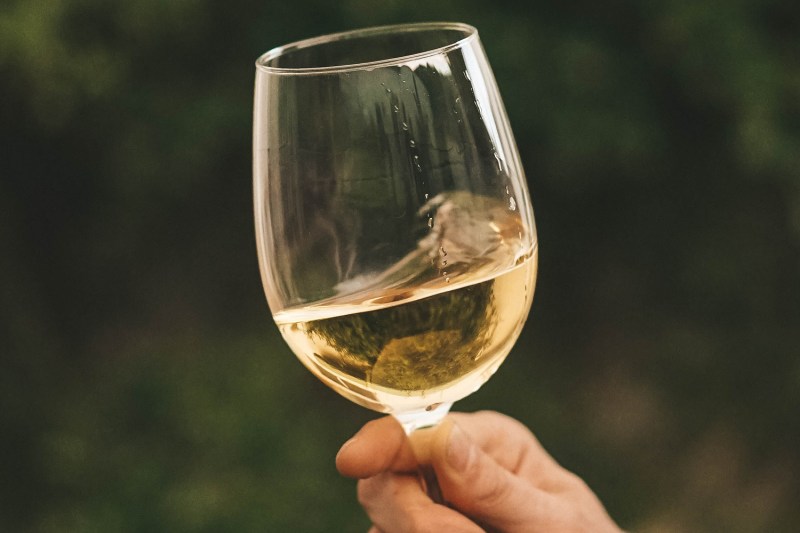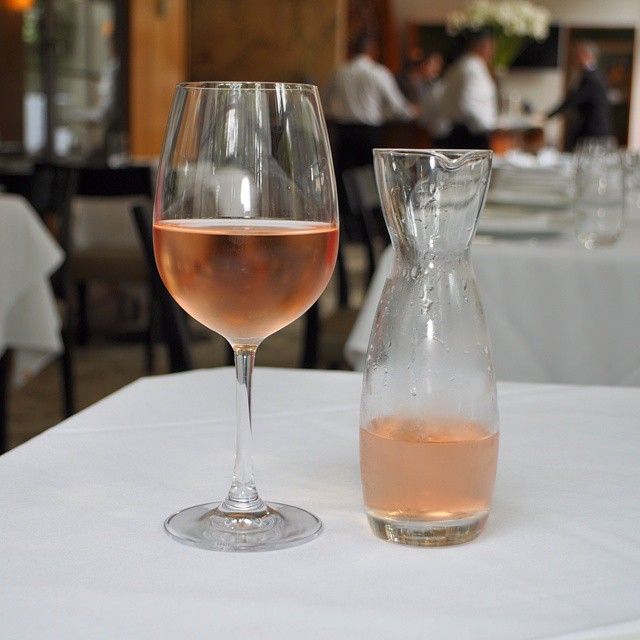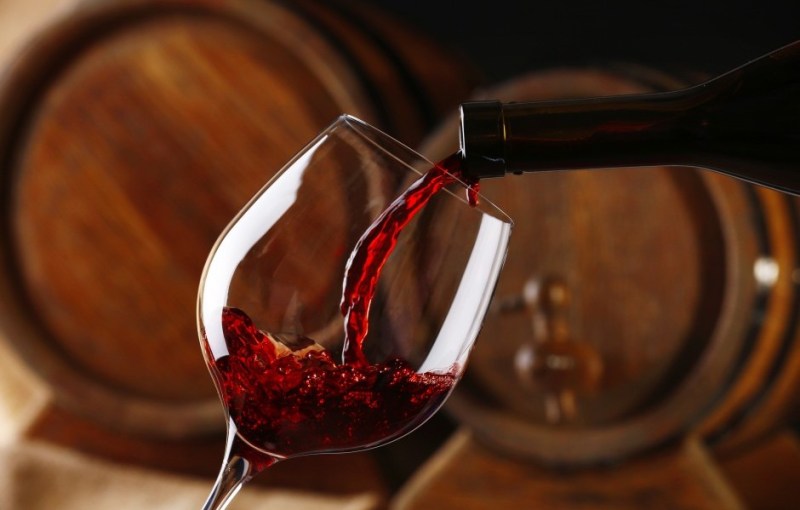Trying to understand everything about wine all at once is impossible — and that’s the beauty of it. Like music or the person you love, there are always new things to discover. Not only that, but your taste in wine will expand and evolve as you mature. If you don’t know that much about it right now, so what? Even the most prestigious wine experts in the world often find themselves at odds with the basics of different types of wine. And anyway, can you think of a ridiculously fun learning opportunity?
So, let’s start with the basics. We’ll learn that — just as in life — there are rules, then exceptions to those rules, then ultimately that there are no rules except be a good person and serve your higher purpose. (OK, maybe this is going a little beyond wine.) Let us open that gate to this particular garden of earthly delight and pop a cork while we’re doing it.
Sparkling wine

We hate to label any of these categories a favorite — all are beloved, of course — but it’s hard not to have a special fondness for the sparkling section. It is, after all, where Champagne lives.
But sparkling wines are so much more than just Champagne. In fact, true Champagne comes from only just one specific region in France, whereas almost every wine-producing country makes a sparkling concoction. In Italy, you have Prosecco. In Spain, Cava. In Germany, Sekt. The Italians even make a sparkling red that’s often quite dry called Lambrusco. The list of bubbly brands is long, and it’s a fun list to explore.
- Pair your sparkling wines with mild cheeses, green vegetables, and shellfish.
- Prevailing flavors: Citrus, peach, brioche, and light berries.
Light-bodied white wine

Next in our disquisition on different types of wine: light-bodied whites — sometimes said to be the “beer of wine,” because they are easy to drink and pair easily with a huge variety of foods. Known for their light, herbaceous flavor, these wines are some of the most popular in the world. They have a high acidity level, which makes them very bright and crisp on the palette. Most often, these are enjoyed as young wines as they don’t age as well as other varieties. They’re particularly refreshing on a hot summer’s day.
- Examples of this variety are pinot grigio and sauvignon blanc.
- Pair your light-bodied whites with fish, nutty cheeses, shellfish, and fruits.
- Prevailing flavors: Green herbs, grass, apple, citrus, bell pepper, and melon
Full-bodied white wine

Full-bodied white wines are rich, creamy, and luscious. Unlike other whites, these are usually wines that have been aged in oak barrels, the way you would age whiskey. Like whiskey, through the barrel-aging process, these wines become smooth and complex in their flavors. A personal favorite of mine are two white Burgundies: Chassagne and Puligny-Montrachet — big, flinty, and buttery of chardonnay that must be tasted to be believed.
- Examples of this variety are chardonnay, Viognier, and Muscat.
- Pair your full-bodied whites with chicken, pork, and roasted vegetables.
- Prevailing flavors: Stonefruit, apple, pineapple, butter, cream, oak, minerals, and vanilla
Aromatic (sweet) white wine

These sweet wines also age very well and range in flavor from dry to sweet. Highly aromatic and flavorful, these wines taste almost thick with flavor. People tend to either love or hate their highly perfumed aromas that you can sense the moment the bottle is uncorked. Some of these wines are made using something called “noble rot” (botrytis cinerea), a gray fungus that concentrates the sugars and imparts a viscous, honeyed sweetness.
- Examples of this variety are Moscato d’Asti, Riesling, Torrontés, and Tokaji.
- Pair your aromatic wines with all cheeses, hearty fish, and spicy dishes.
- Prevailing flavors: Honeysuckle, apple, peach, orange peel, and beeswax
Rosé wine

Rosé has enjoyed a renaissance in the last several years. A wine that was once only associated with gossiping grandmothers and Monday night Bunko club is finally getting the respect it deserves. Rosé is made unlike any other wine, getting its pink hue from the skins of red wine grapes. Rosé’s flavor is elegant and subtle, and can be sweet or dry. It’s literally the middle ground between red and white wine (shout out to a very different type of wine, rosé’s cousin, orange wine).
- Rosé wines can be made from any red grape variety, but those used most often are pinot noir and merlot.
- Pair your rosé wines with pastas, chicken, pork, and cured meats.
- Prevailing flavors: Citrus and strawberry
Light-bodied red wine

Light-bodied red wines are arguably the most popular on our list. They’re light, easy to drink, and have a very light tannic structure. Their mildly sweet flavor makes them highly popular across the board.
- Examples of this variety are Beaujolais, pinot noir, and grenache.
- Pair your light-bodied red wines with all cheeses, chicken, pork, pastas, and cream-based dishes.
- Prevailing flavors: Mushroom, cherries, and blackberry
Medium-bodied red wine

Medium-bodied reds are the perfect balance of boldness, tannin, sweetness, and acidity. This well-rounded flavor pairs beautifully with a wide range of foods but also holds up perfectly on its own.
- Examples of this variety are sangiovese, merlot, zinfandel, and cabernet franc.
- Pair your medium-bodied red wines with cheeses, earthy flavors like mushrooms and nuts, and leaner cuts of beef.
- Prevailing flavors: Cranberry, plum, and blackberry
Full-bodied red wine

Full-bodied reds are the burliest of all wines. Their deliciously heavy tannin and dark, jammy notes make them the boldest wines, able to take on any seared, fatty ribeye or enormous lamb shank you throw their way. The high amount of tannin molecules in these wines actually soften fat, helping cooked meat to release even more flavor. So they’re a perfect pairing for all of your cold-weather comfort foods.
- Examples of this variety are syrah, malbec, Barolo, and cabernet sauvignon.
- Pair your full-bodied red wines with fatty meats, stews, and braises.
- Prevailing flavors: Tobacco, cherry, currant, and black peppercorn
Dessert wine

Dessert wines went out of fashion for quite a while, but we’re happy to say that these types of wine are making a pretty delicious comeback. These are the wines you see in movie detective’s libraries or sitting about on a crystal side table in old-timey mansions. As old fashioned as dessert wines are, though, they’re worth getting to know. They range in sweetness, depending on your preference.
They can also be red or white: a golden Sauternes from France’s Graves region or a deep dusky red ruby port from Portugal. Don’t sleep on Italian offerings, either: “I have actually begun to work with Brachetto again,” NYC sommelier Pamela Walton told Wine Spectator, “and am finding it pairs perfectly with so many desserts. Especially those with chocolate and warm spices.” In my book, you can never go wrong with a late-bottled vintage port — they have a range of nuanced flavors and aromas without vintage port’s price tag.
- Examples of this variety are port, sherry, and Madeira.
- Pair your dessert wines with any number of sweet treats or desserts. Port (and other sweet red dessert wines) love chocolate. White dessert wines go beautifully with cheese, fruit, and ice cream. All are wonderful as a dessert on their own.
- Prevailing flavors: Chocolate, molasses, hazelnut, and stone fruit




